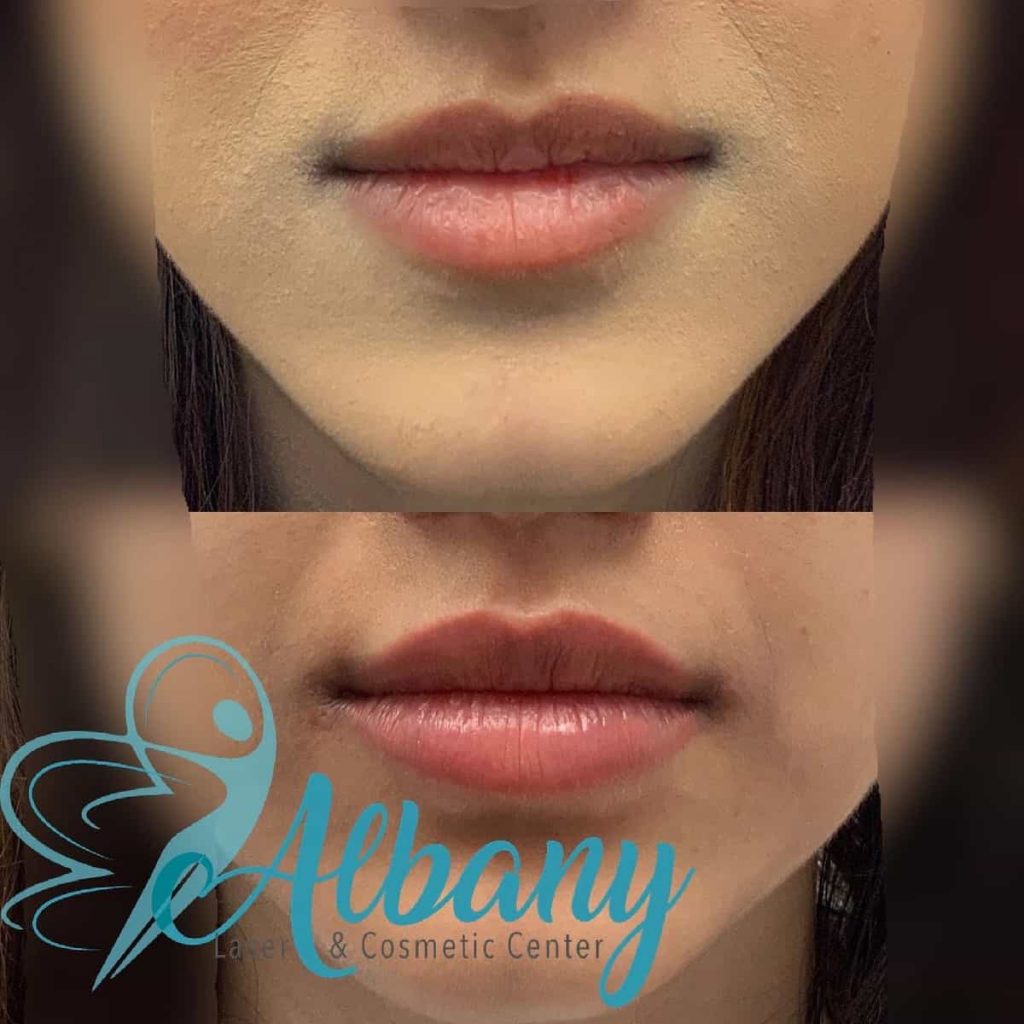Improving Lip Appearance with Cannula Case # 1094
When talking about lip filler injections, it’s crucial first to grasp what we’re talking about. There’s no denying that their popularity has grown in recent years. It’s so common that I’m often invited to professional gatherings where fillers are served with beverages.
What Are Dermal Fillers and How Do They Work?
Derma fillers are non-surgical cosmetic procedures that inject soft, gel-like material into the skin. They include substances that enhance volume to regions that have thinned due to age, particularly in the cheeks, lips, and around the mouth, to restore the look of youthfulness.
So, here’s what you need to know: “Fillers” is a phrase used to refer to some cosmetic treatments intended to fill in regions of volume loss. The hallows of your under-eyes, lips, nasolabial folds (laugh lines), and cheekbones are all popular locations to plump. There are also disparities in their costs and the length of time they endure.
The longer-lasting solutions are more expensive upfront. However, term fillers may last anywhere from six to eleven months, depending on the patient’s pace of aging (smoking, drinking, sun exposure, and genetics), whereas longer-term fillers may last anywhere from one to two years.
What kind of filler do I need, if any?
As you get older, the mid-face drops down a little bit. The skin loosens a bit, and the tissue loses its support. This line here starts to droop, and what’s above it, the under-eye bag, starts to appear more. Each facial area required a different thickness of fillers.
What Kind of Needle Is Appropriate?
Microcannulas are a [rounded] blunt-tip instrument [that looks like a needle but isn’t a needle] that we employ. Instead of a slew of small holes surrounding the eyes, the microcannula creates only one large hole. These ‘holes’ enable the blunt needle to inject filler further into the muscle and onto the bone, depending on the procedure used. As a result, it enables more exact insertion and, according to Pack, reduces the risk of post-procedure bruising.
Needles are sharp (of course), but microcannulas have flat, rounded tips. When employing a microcannula, I’ve witnessed a dramatic reduction in bruising and swelling in patients following filler injections. Because a microcannula is flexible, it can typically treat numerous parts of the face with a single needle hole, reducing discomfort and bruising.”
The most serious filler problems (vascular compromise) may occur when filler material is injected into arteries, causing the artery to become clogged and blood flow to a skin region diminishes. The skin that the artery feeds may die due to the reduced blood supply. Microcannulas virtually eliminate the risk of intravascular injection. Microcannulas are particularly beneficial in delicate and vulnerable parts of the face, such as the lips and behind the eyes, where bruising is more likely, and injection is often uncomfortable. They do (for your injector) need a little more time and expertise, and there is a learning curve. I seldom have patients bruise now that I use them almost entirely for injections, and I see a reduction in patient pain and edema. I would never go back to needles.
So, what happens during Lip fillers?
We make a tiny hole close to your lip or over your cheekbone and glide the needle in and up your cheek beneath the skin. Therefore, we can fill beneath your eyes (not directly into the under-eye area). It sounds terrifying, I know. And believe me, I’ve seen footage, and it looks terrifying. However, since the one hole is the only injection site, it heals in two hours and hurts less since it’s an anesthetic.
During some injections, the filler is injected subcutaneously so that the cannula can glide through the tissue without harming anything. There will be a significant reduction in skin injuries and problems. After that, we can ensure we are on the deepest plane in the face, and that reduces hazards. When injecting fillers deep into the skin, they might resemble bone and, as a result, seem best when the patient smiles or emotes. The injection procedure is straightforward and painless. The number of pokes at each location is just one or two, not ten or twenty.
The Cannula Lip Augmentation: Case No. 1287
